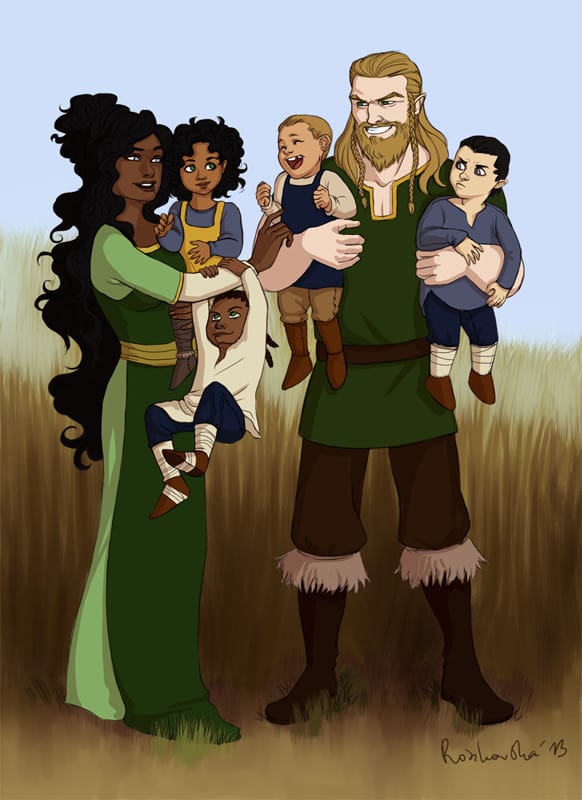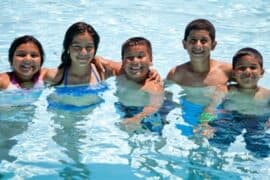Welcome Aboard, Modern Parents! Discovering the Fascinating World of Viking Families
Ahoy, curious parents! Are you ready to embark on a thrilling voyage back in time to unravel the mysteries of Viking family life? Look no further, as this comprehensive guide will take you on an insightful journey into the heart of Norse households. Whether you’re a history buff or seeking fun educational content to share with your little ones, our expedition through the Viking Age is sure to enthrall and enlighten the entire clan!
Setting Sail: Introducing the Viking Era
Before we dive into our exploration of Viking families, let’s set the stage with a brief introduction to the Viking Age. Spanning from late 8th to early 11th century, it was a period marked by exploration, trade, and sometimes plundering, as the seafaring Norsemen ventured out from Scandinavia to far-flung corners of the globe.
Charting the Course: Viking Social Structure
The bedrock of Viking life was the family unit. Just like the sturdy longships that carried them across the seas, Viking families were resilient and well-structured. Society was stratified into various classes, from powerful Jarls (nobles) down to thralls (slaves). But at every level, the family was the nucleus of daily existence. Let’s hoist the sails and delve deeper into the specifics of their familial arrangements.
Norse Household Dynamics: The Lay of the Land
In the heart of a Viking homestead, the traditional longhouse sheltered multiple generations. Not only was it a home, but it also served as a workspace for crafts and farming activities. Within these robust walls, the roles of each family member were well-defined:
- The Patriarch: Often regarded as the chieftain of the homestead, he was responsible for decision-making, securing the prosperity of the household, and leading in times of war.
- The Matriarch: The Norse wife wielded significant influence, managing the domestic sphere, caring for children, and even running the estate during her husband’s absences.
- Children: From a tender age, boys and girls were taught essential skills to thrive in their rugged surroundings. Their education was a practical one, centered on survival, labor, and the arts of war or homemaking.
Striking Balance: Gender Roles and Equality
The portrayal of Viking women as mere homemakers does injustice to their pivotal role in society. Women in the Viking Age were often landowners, traders, and sometimes warriors. They had rights to inheritance and could request a divorce. Men, predominantly hunters and warriors, also shared responsibility in rearing livestock, farming, and maintaining the homestead.
Cultivating Courage: Raising Children in the Viking Age
Raising children was a communal effort, with a heavy emphasis on instilling the virtues of bravery, honor, and loyalty. Boys and girls learned through stories of their ancestors, sagas of gods and heroes, and direct participation in daily tasks. These tales and experiences helped kickstart their imaginations and fostered a deep sense of cultural identity.
But hold your Viking helmets, we’re just getting started! In our upcoming sections, we will dive into the fascinating rituals and milestones of young Vikings, from their namings to their coming-of-age ceremonies. Join us as we explore how parenting in the Viking era set a framework for values, responsibilities, and educational methods that have rippled through time to influence modern family dynamics.
As we continue our voyage through the annals of history, it’s clear that the Viking family structure was as multifaceted as the runes they left behind. Stay tuned, as our next installment will delve deeper into the rites of passage that shaped the Nordic youth, the role of mythology in a Viking child’s education, and the exciting outdoor games that kept them hardy and strong.
Embarking on this historical journey not only provides a window into the past but also lends perspective on the evolution of family values over time. So, grab your shields and join us as we forge ahead, uncovering more treasures from the Viking era and its endearing family life!
Prepare to unfurl the sails of knowledge as we continue our exploration in the next installment, revealing how the Vikings’ devotion to family and community can inspire the way we nurture our own little warriors and shield-maidens today. Keep your eyes on the horizon—there is much more to discover together!

Preparing for Viking Families: 5 Things Parents Should Know
1. Understanding the Importance of Names
In the Viking culture, names held significant power and were often chosen for their meaning. They believed that certain names could bring strength, luck, and a strong connection to their heritage. As a parent, instilling a sense of identity and heritage in your children can start with exploring the meaning behind their names and the stories they carry.
2. Embracing Outdoor Play and Skills Building
Viking children were raised to be self-sufficient and skilled from an early age. Engaging your kids in outdoor activities, such as camping, hiking, or gardening, encourages the development of practical skills, resilience, and a love for nature, much like the young Vikings of old.
3. Storytelling as a Teaching Tool
The Norse culture was steeped in rich oral traditions with tales of gods, heroes, and ancestors. Encouraging the art of storytelling in your home can help to develop your child’s imagination, moral compass, and understanding of their place in the world—as it did for the Viking youth.
4. Celebrating Milestones and Rites of Passage
Viking society recognized milestones, such as coming of age, with ceremonies and celebrations. Creating meaningful traditions around milestones in your child’s life can help build self-esteem and a sense of achievement, as well as strengthen family bonds.
5. Instilling the Values of Community and Teamwork
Viking life required cooperation and a strong community. Involving your children in team sports, community service, or family projects can teach them the importance of working together and contributing to the greater good, much like members of a Viking tribe.
These five insights into the Viking way of life can enrich your parenting approach and provide your family with a fascinating perspective on the past. By learning from the Vikings, we can incorporate time-honored principles into our modern families and foster a spirited, resilient next generation.
Now, as we forge onward in our saga, let’s anticipate the next chapters where we will illuminate the traditions that knitted Viking families together. From the rituals that celebrated new life and achievements to the tales spun under the glow of the hearthfire, we will peel back the layers of time for a closer look at the threads that wove the fabric of the Viking family.
As we prepare to explore these aspects further, we hope that this guide has sparked a curiosity to learn and perhaps even adopt some of the robust practices that helped Viking families thrive in their challenging era. With strong bonds, shared values, and a spirit of adventure, there’s no telling what our families can accomplish!
Don’t let this be ‘the end of your scroll’; rather, let it mark the beginning of an immersive exploration into an age of strength and sagas, an age where family was the cornerstone of life—a journey that is sure to enrich your family’s story with lessons from the rugged, yet revered, Viking families of old.
See more great Things to Do with Kids in New Zealand here. For more information see here
Disclaimer
The articles available via our website provide general information only and we strongly urge readers to exercise caution and conduct their own thorough research and fact-checking. The information presented should not be taken as absolute truth, and, to the maximum extent permitted by law, we will not be held liable for any inaccuracies or errors in the content. It is essential for individuals to independently verify and validate the information before making any decisions or taking any actions based on the articles.




